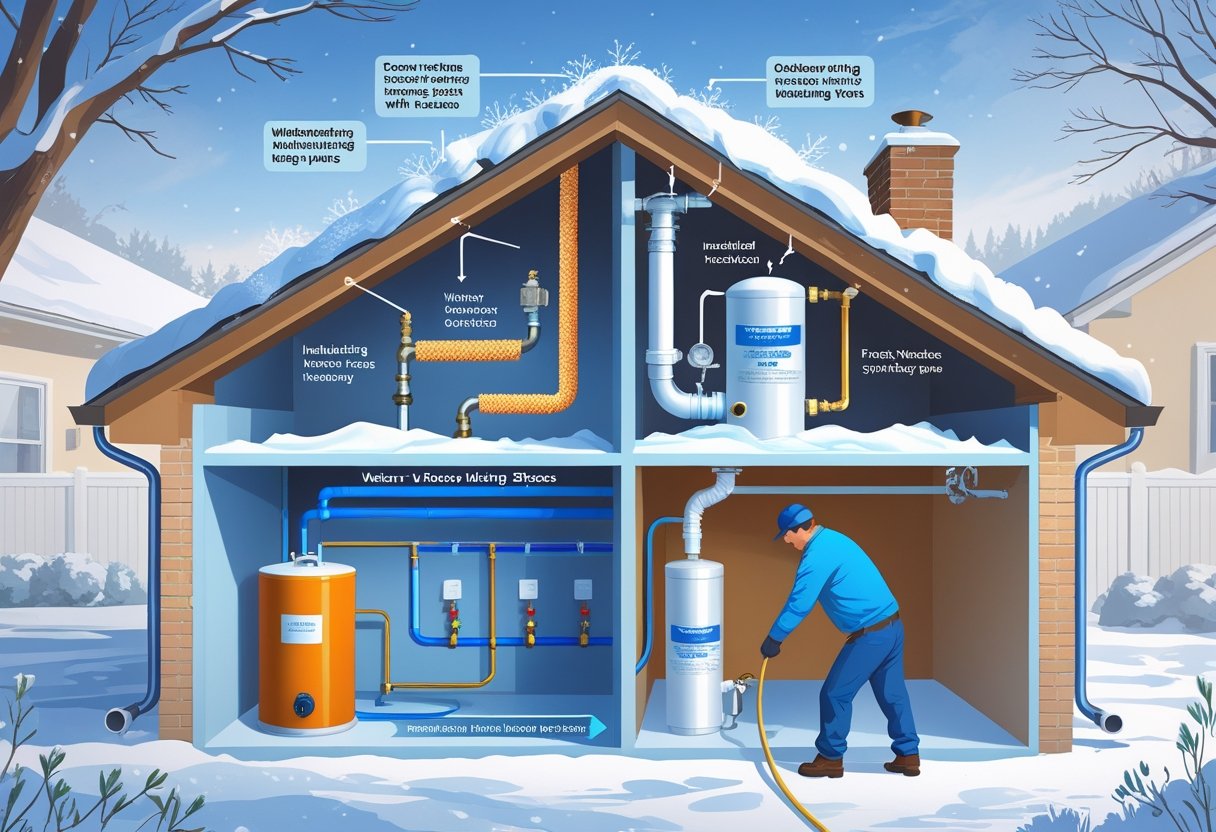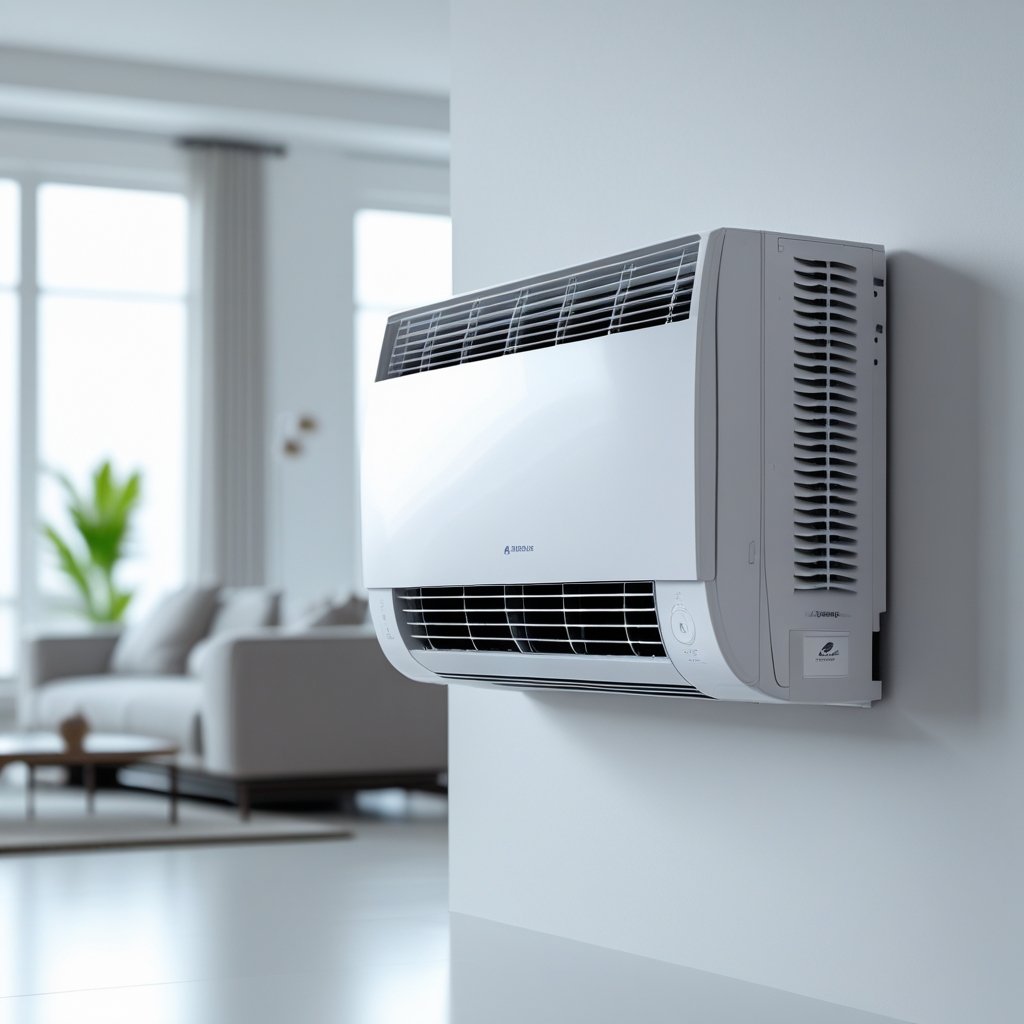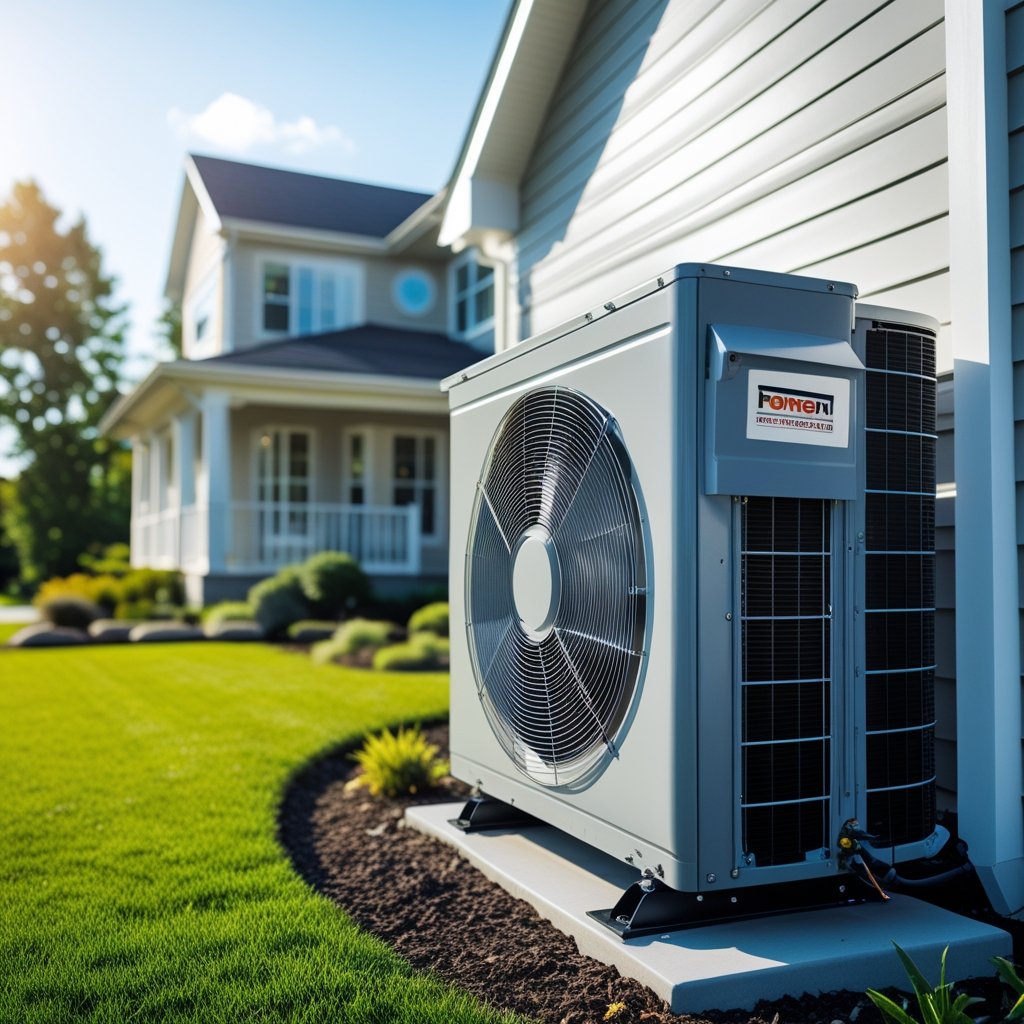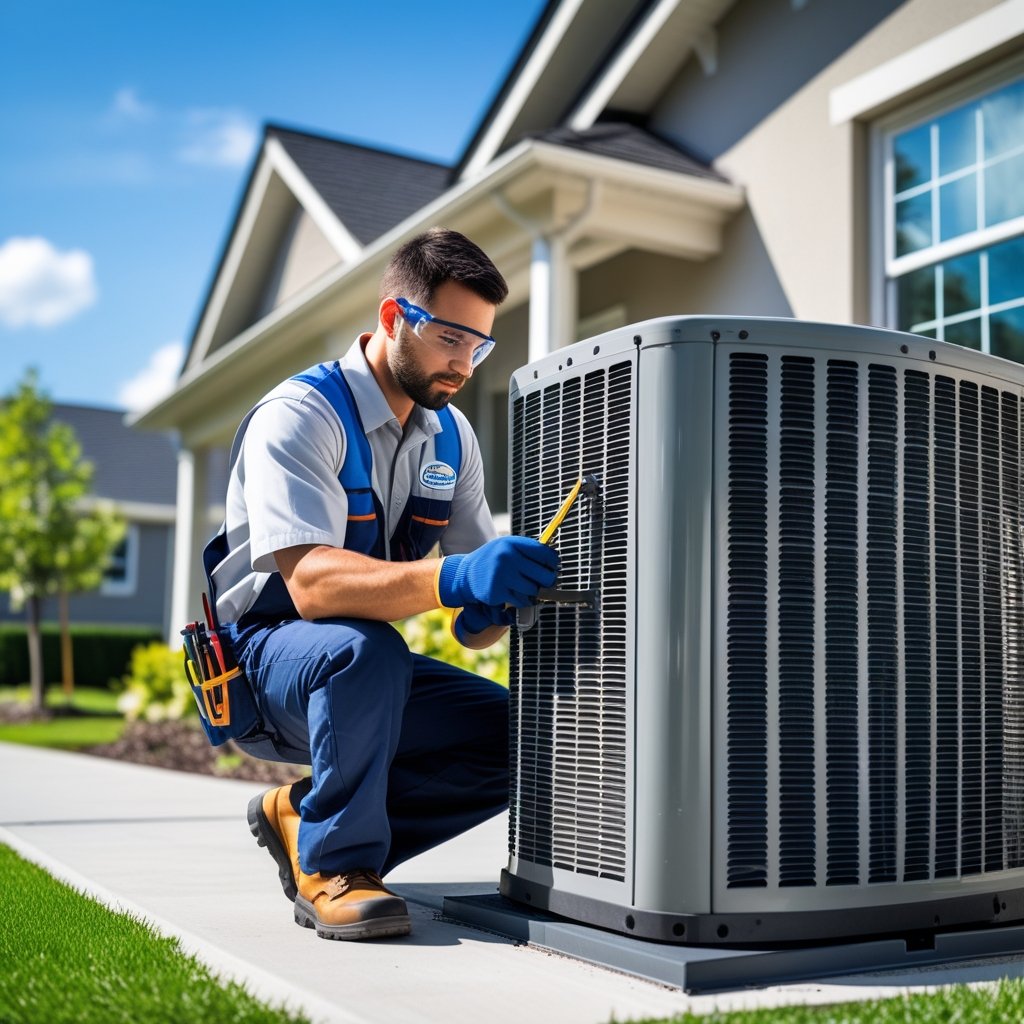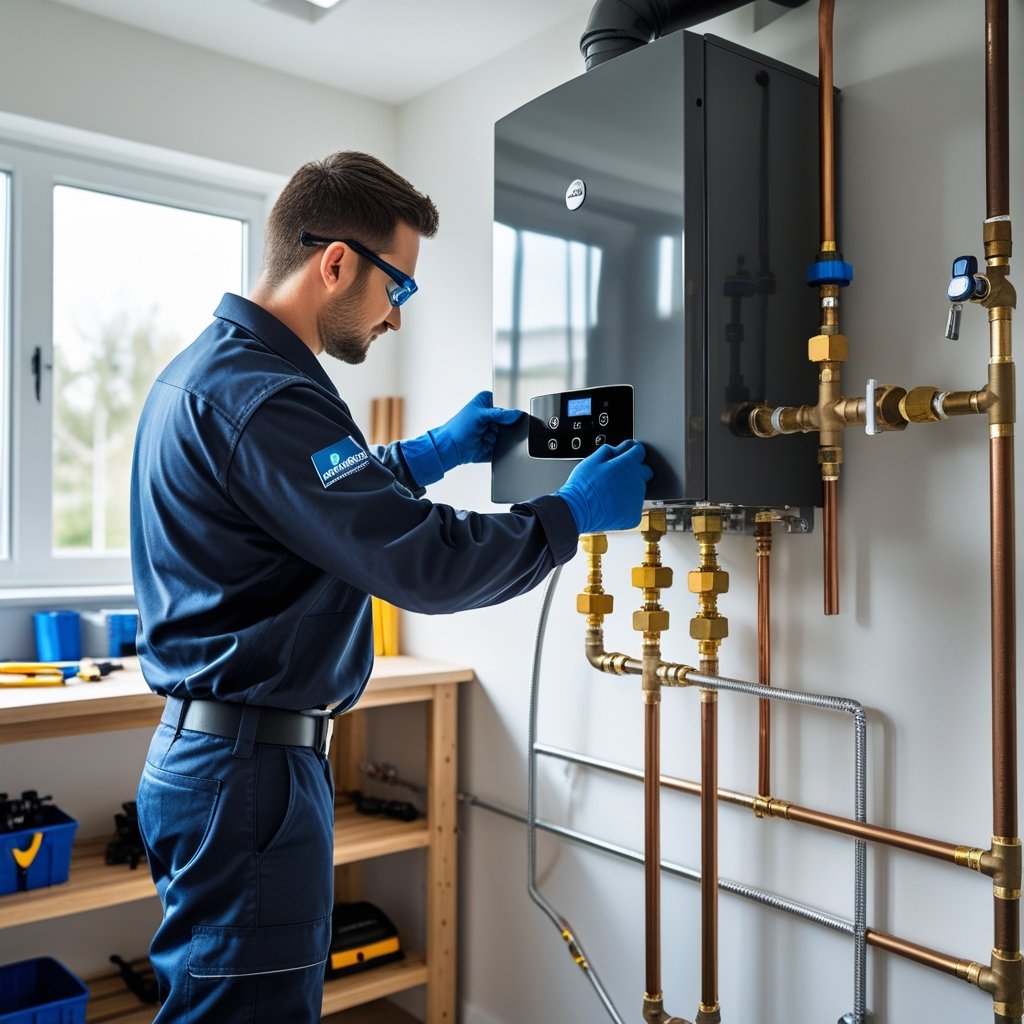Winter’s rough on plumbing, no doubt about it. If you don’t take a few precautions, you might end up with frozen pipes, leaks, or some truly expensive repairs. The best way to protect your plumbing in winter? Drain outdoor hoses, insulate exposed pipes, and keep your home’s temperature steady. Getting this done before the real cold hits can save you a ton of trouble.
When you winterize your plumbing, you’re not just avoiding disasters—you’re saving money and stress. At Leo Kob Co., we’ve seen firsthand how things like sealing up drafty cracks or shutting off water to outdoor faucets really make a difference. With over a century serving South Central Pennsylvania, we’ve picked up a trick or two that actually works in homes around here.
There’s a certain peace of mind in knowing your pipes are ready for whatever winter throws at them. Let’s dig into some steps you can take right now to keep things running smoothly all season.
Why Winterizing Your Plumbing Is Essential
If you skip winterizing, you’re asking for expensive repairs, water damage, and higher energy bills. Protecting your pipes when it’s cold is just smart home maintenance.
Preventing Costly Pipe Damage
Water expands when it freezes, and that spells trouble for pipes. Cracks, bursts, and thousands in repairs—nobody wants that.
Drain your outdoor hoses and shut off exterior faucets.
Insulate pipes, especially in chilly spots like basements or crawl spaces.
Let faucets drip a little on the coldest nights—it helps keep things moving.
We always suggest checking your plumbing every year. Catching weak spots early beats scrambling after something bursts.
Ensuring Home Safety
Frozen or burst pipes aren’t just a mess; they can flood your place and set up mold growth or even structural headaches.
Leaks get even scarier if water finds its way to wiring or outlets.
Winterizing isn’t just about pipes—it’s about keeping your whole home safer.
Insulation and sealing up those sneaky drafts can save you from a world of problems.
You’ll sleep better knowing your house is ready for whatever winter throws your way.
Improving Energy Efficiency
Cold pipes make your furnace work overtime.
Insulated pipes hold their heat, so your place stays warmer without cranking up the thermostat.
Less heat loss means lower bills—always a win.
Honestly, winterizing pipes goes right along with fixing drafty windows or tuning up your heating.
If you want to save energy and avoid breakdowns, plumbing inspections are worth a look.
Inspecting Your Plumbing System
Before winter digs in, give your plumbing a careful once-over. Look for leaks, check insulation, and make sure those outdoor faucets aren’t going to cause trouble.
Checking for Leaks and Cracks
Check every visible pipe for leaks or cracks—especially under sinks, around your water heater, and in basements or crawl spaces. Even a tiny drip can freeze and make a much bigger mess.
Grab a flashlight and hunt for damp spots on walls or floors. If you spot a leak, try tightening connections, but don’t be shy about calling a pro if things look sketchy.
Older pipes deserve extra attention. They get brittle and are more likely to crack if frozen. Better to fix them now than deal with a mid-winter plumbing emergency.
Assessing Pipe Insulation
Check if your pipes have enough insulation, especially in cold spots like basements, attics, or garages. Pipes without insulation? They’re asking for trouble.
Replace any worn foam sleeves. Wrap extra cold-prone pipes with heat tape if you need to. It’s a quick fix that can save you a lot of hassle when temps drop.
We’re big fans of pipe insulation at Leo Kob Co.—it’s cost-effective and saves you a lot of grief.
Evaluating Outdoor Faucets
Outdoor faucets are easy targets for freezing air. Disconnect hoses and drain any water left in the spigot.
If there’s a shut-off valve inside, close it and open the outside faucet to let water drain out. That way, nothing’s left inside to freeze and burst.
Faucet covers are cheap and easy to put on. They help protect your investment—no reason not to use them.
If you’d rather not mess with this stuff, give us a call at Leo Kob Co. We’re always happy to help with inspections or repairs in South Central Pennsylvania.
How to Insulate Pipes for Winter
Insulating pipes is your best bet for avoiding frozen, burst plumbing. Picking the right material, knowing how to use heat tape, and focusing on the coldest areas makes all the difference.
Choosing the Right Pipe Insulation Material
When you’re shopping for pipe insulation, pick something that fits snugly and isn’t a pain to install. Foam sleeves, fiberglass wraps, and rubber tubing all work. Foam’s a favorite—lightweight, easy, and it does the job.
Measure your pipes before buying. You want full coverage, no gaps. For outdoor or exposed pipes, choose something rated for moisture so you don’t end up with mold.
We usually suggest foam or rubber insulation—they’re affordable, tough, and easy to put on. Skip anything flimsy or brittle; it won’t last through a real cold snap.
Applying Heat Tape
Heat tape is basically an electric blanket for your pipes. It’s perfect for spots that get seriously cold, where insulation alone just isn’t enough.
Clean the pipes first so the tape sticks. Wrap it evenly—don’t just bunch it up—and follow the instructions for overlap and spacing. Use electrical tape to hold it in place and keep moisture out.
Heads up: Never coil heat tape on itself or bury it under thick insulation. That’s a fire risk. Only use thin insulation or sleeves designed for heat tape.
Heat tape needs power, so double-check your electrical setup. If you’re not sure, have a pro from Leo Kob Co. take a look.
Insulating Pipes in Unheated Areas
Basements, crawl spaces, attics, garages—these spots are always colder and put pipes at risk.
Seal up any cracks or holes where cold air gets in. Wrap pipes tightly with insulation, and don’t forget exposed valves or fittings—foam covers work great there.
In older homes around South Central PA, these areas are often drafty. Insulation plus heat tape is usually the best combo. Check pipes during cold snaps for frost or leaks.
Solid insulation keeps things flowing. If you want a pro’s touch, Leo Kob Co. does inspections and insulation tailored for your home.
Draining and Protecting Outdoor Plumbing
Outdoor plumbing needs special attention before winter. Shut off water, drain hoses and spigots, and cover faucets—these steps keep pipes from freezing and splitting. Trust me, skipping this stuff leads to costly repairs.
Shutting Off Exterior Water Sources
Find the shutoff valve for your outside water lines—it’s usually inside, maybe in the basement. Turn it off to stop water heading to outdoor faucets.
Once it’s off, open all outdoor spigots and let the water drain out. No standing water means nothing left to freeze and burst.
If the valve’s leaky or stuck, fix it or call someone who can. We handle this all the time at Leo Kob Co., so don’t hesitate to reach out.
Draining Garden Hoses and Spigots
Always, always disconnect hoses before winter. Leaving them attached traps water and ups your freeze risk.
Drain hoses by holding one end down and letting the water run out. Toss them somewhere indoors so they don’t get brittle and crack.
Open outdoor spigots all the way to drain leftover water. Leave the spigot open but hoses off—let the pipes air out. It’s a simple move that helps prevent frozen or burst pipes.
Covering Outdoor Faucets
Outdoor faucets need covers. Foam or plastic ones made for winter work best—they keep cold air out and warmth in.
Install them snugly over each exterior spigot after you’ve drained and shut everything off.
In South Central PA, where winters get rough, these covers are a must. They’re cheap insurance against frozen plumbing.
Stick with these habits and your outdoor plumbing should make it through winter just fine. We always recommend them at Leo Kob Co.—it’s just common sense.
Safeguarding Indoor Plumbing During Freezes
Indoor pipes need some love during cold snaps too. A few easy habits can help you avoid burst pipes and water disasters.
Letting Faucets Drip
Letting faucets drip keeps water moving—just enough to stop pipes from freezing up.
Focus on faucets tied to pipes in unheated areas: basements, crawl spaces, that sort of thing. You don’t need a lot, just a slow, steady drip.
If you’ve got a bunch of faucets, dripping one or two should do the trick. This is especially smart on nights when temps really tank.
Opening Cabinet Doors
Pop open cabinet doors under sinks to let warm air reach the pipes—especially if they’re along outside walls.
Keep cabinets open during cold spells, even if you only heat the main rooms.
Got pets or little kids? Just keep an eye on those open doors so nobody gets into trouble.
Maintaining Consistent Home Temperature
Don’t mess with the thermostat too much. Keep it steady—better to spend a bit more on heat than pay for burst pipes.
Seal up drafts around doors, windows, and basements so your heating system doesn’t have to work overtime. We always suggest this as part of winter prep.
Protecting Water Heaters and Appliances
Your water heater and appliances need some attention too if you want to avoid surprise repairs. A little insulation and hose care goes a long way to maintain efficiency and prevent leaks.
Inspecting Water Heater Insulation
Check your water heater’s insulation. If the blanket’s torn or missing, replace it—it’ll hold in the heat and save energy. Look for dampness or rust, which can mean leaks or bigger issues.
Insulate the pipes connected to your heater too. Foam sleeves or heat tape keep them from freezing. If your heater’s in an unheated space, maybe add a space heater or more insulation.
These steps save energy and might even lower your bill. Plus, they help your water heater last longer.
Protecting Washing Machine Hoses
Washing machine hoses take a beating in the cold. Check both hot and cold hoses for cracks, bulges, or rust. If they look rough, swap them for stainless steel braided hoses—they’re way tougher.
If your laundry’s in a chilly spot, disconnect and drain hoses after each use in winter. Or just shut off the water supply to the washer between loads.
A little attention here prevents water damage and headaches. Our team at Leo Kob Co. always recommends these easy fixes to keep things running smoothly all season.
Dealing With Frozen Pipes
Frozen pipes are a pain—no way around it. If you know how to spot them and what to do, you can often avoid a total disaster.
Identifying Signs of Frozen Pipes
If you turn on a faucet and the water barely trickles—or nothing comes out at all—frozen pipes could be the culprit. Pipes in basements, attics, or crawl spaces, where cold air sneaks in, tend to freeze first.
Check for frost or icy patches on pipes, or just feel along them for spots that seem unusually cold. Sometimes, you’ll hear odd banging or clanking from the plumbing—never a good sign.
A sudden jump in water pressure or tiny leaks might also point to frozen or even cracked pipes. Catching these early can save you from a full-blown burst pipe disaster.
Safely Thawing Pipes
Skip the open flames; it’s just not worth the risk. Here are safer ways to thaw frozen pipes:
- Try a hair dryer or heat gun, moving it gently along the pipe.
- Wrap the pipe with towels soaked in hot water.
- Use an electric heating pad made for pipes.
Always start thawing nearest the faucet. That way, melting ice has somewhere to go. Keep the faucet open while you work, so steam and water can escape.
If the pipe won’t thaw or you catch a whiff of gas, turn off your water and call a professional. Leo Kob Co. offers reliable plumbing service in South Central PA—they know their stuff and handle frozen pipes safely.
Winter Emergency Plumbing Kit Essentials
Having the right gear handy makes a huge difference when winter plumbing trouble strikes. If you’re prepared, you’ll know exactly what to do when a pipe freezes or bursts.
Recommended Tools and Materials
Here’s what I’d keep in a winter plumbing kit:
- Pipe insulation: Foam sleeves or heat tape help stop freezing in the first place.
- Plumber’s tape: For quick leak fixes on threaded pipes.
- Adjustable wrench and pliers: Essential for tightening or loosening parts.
- Pipe repair clamps: Temporary fixes for burst pipes until help arrives.
- Bucket and towels: For catching leaks and mopping up water.
- Portable heater: Handy for thawing pipes (but don’t leave it unattended).
- Flashlight and extra batteries: Power outages happen, especially in winter.
Keep all this in a box you can grab fast. If you use something, replace it right away—future you will thank you.
Creating an Emergency Plan
Find your main water shut-off valve now, not later. If a pipe bursts, you’ll want to shut it off in seconds, not minutes.
Write down emergency contacts—including your go-to plumber like Leo Kob Co.
Make sure everyone in the house knows where the shut-off is and how to use the kit.
Check pipes in cold, unheated spots regularly. Have a backup heat source on hand to protect your plumbing if it gets frigid.
Professional Help and Seasonal Maintenance
Sometimes, winterizing your plumbing just gets complicated. If you spot leaks, weak insulation, or drains that barely move, it’s probably time to call a pro. Leo Kob Co. has been around South Central Pennsylvania since 1904—solid reputation, no hidden fees.
A yearly plumbing check-up can catch trouble before it gets expensive. Regular maintenance keeps pipes safer through the cold months. Pros can also help with drain cleaning, water heater inspection, and sewer lateral replacement.
Seasonal maintenance usually covers:
- Pipe insulation and repair
- Leak detection and fixes
- Water pressure testing
- Drain clearing
Some maintenance plans even offer perks like priority scheduling or discounts. Not a bad way to get some peace of mind, honestly.
If you’re in Lancaster, Harrisburg, York, or nearby, local experts can help with winter prep. A quick inspection now could save you a lot of hassle later. Leo Kob Co. offers fair prices and a team that actually cares about your home.
Frequently Asked Questions
Winterizing pipes means keeping water inside from freezing and causing damage. Usually, that’s draining pipes, using antifreeze safely, and protecting exposed pipes.
What are the best steps to winterize plumbing in a vacant house?
Shut off the main water supply. Drain all water from pipes, fixtures, and appliances. Pour non-toxic antifreeze into traps and toilets. Crack open faucets so leftover water can expand if it freezes.
Can you use antifreeze to protect water pipes during winter, and how?
Yes, but only use plumbing-safe antifreeze—usually the pink, non-toxic RV type. Pour it into drains, traps, and toilets to help prevent freezing.
How can an air compressor be used to winterize home plumbing?
After turning off the water, use an air compressor to blow air through the pipes. This pushes out leftover water, making freezing less likely.
When should I start draining my pipes to prevent them from freezing?
Drain pipes when temps start dipping below 32°F (0°C), usually late fall before the first real freeze. Watch the weather to time it right.
What temperature puts my plumbing at risk of freezing?
Anything below 32°F (0°C) is risky. Pipes in basements or crawl spaces can freeze even if the rest of the house feels warmer.
What are the essential actions to winterize a vacation home's plumbing?
Start by shutting off the main water supply—don’t skip that. Then, drain all the pipes as best you can. Pour some antifreeze into the traps and toilets; it’s a bit of a hassle, but it really helps. If you spot any exposed pipes, wrap them up with insulation. Not sure you did it right? You might want to call a local pro like Leo Kob Co. to give your system a once-over.

